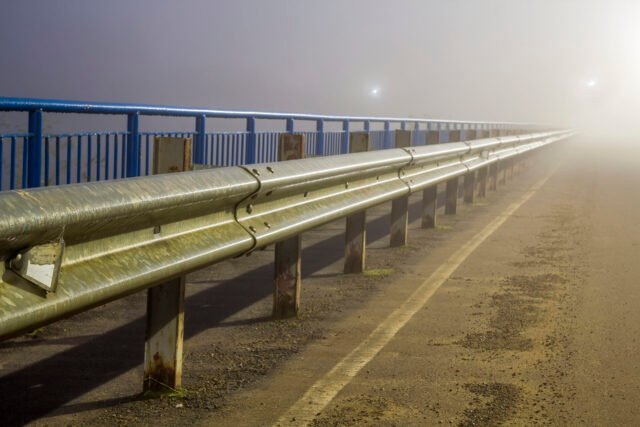Crash barriers aren’t optional. They’re engineered safety systems that stand between life and death. When they’re properly designed, they protect drivers, passengers, and public infrastructure. But when they’re poorly designed, the consequences are brutal—both financially and in terms of human life.
Many crash barrier projects run into the same costly design errors. Some seem minor at first glance, but over time, they lead to lawsuits, reconstruction, or worse—catastrophic failure in an actual crash.
First, we’ll look at five of the most common and expensive design mistakes. Then we’ll walk through how to avoid each one, using clear, actionable steps.
The Costliest Design Mistakes
1. Mismatching Barrier Type to Site Conditions
One of the most common mistakes is using a barrier system that’s not appropriate for the environment. For example, using a cable barrier (a flexible system) on a narrow highway shoulder can create more problems than it solves. It may not have the space it needs to deflect safely, putting vehicles—and lives—at risk.
Worse, engineers may default to a “standard” solution without evaluating speed limits, road width, or vehicle types. That mismatch leads to underperformance or failure during impact.
2. Neglecting Barrier End Treatments
A crash barrier design without a proper terminal end is like a sword pointing at oncoming traffic. When vehicles hit an untreated or poorly designed end, the barrier doesn’t absorb energy—it becomes a hazard. In some cases, the barrier slices through the vehicle, with fatal results.
End treatments are often ignored or improperly specified, especially in budget-tight projects or rural designs. This proves to be life threatening during frontal collisions.
3. Getting the Barrier Height Wrong
Barrier height plays a bigger role in crash safety than most people realize. If the top of the barrier is not very high, a car can easily go up and over the barrier. Conversely, if it is too high, it can elevate the front of a smaller car, putting it in an unstable position, and a roll over might occur. The situation gets serious when highways are traveled by cars of different sizes and heights, from low-built to fairly high ones. When engineers don’t adjust barrier height to reflect the actual vehicles on the road, they leave a gap in the system. And that gap can turn a crash into something far worse. This is one of the most common barrier engineering mistakes.
4. Installing Barriers Without a Real Risk Review
Barrier placement should never be done on guesses. Not only the spacing or the layout—understanding the behavior of vehicles in the case of an emergency is the key. If there is a barrier in a position too near to the lane, it could provoke an accident that should not occur. On the contrary, a barrier too far away would not be able to decelerate a vehicle in time. It is also important to have a look at the road’s curves, slope angles, and any past accidents. A proper risk analysis helps make sure barriers are actually where they’re needed—nothing more, nothing less.
5. Using Systems That Haven’t Been Properly Tested
A big difference lies between a barrier that’s been crash-tested and one that just looks good on paper. Some road safety products projects still use outdated or custom designs that haven’t gone through proper testing. Even small changes—like tweaking the distance between posts or using different hardware—can completely change how the system performs during an impact.In some cases, decisions are made to save time or money for the short term. However, if things go off track in the long term, it can have very bad consequences in the event of a crash. In addition, the barrier that has not been through certified tests is a threat to not only safety but also the law.
How to Avoid These Mistakes
1. Go for a Barrier That Fits the Site
Getting the barrier type right starts with one thing: understanding the site. Take the time to study the road—its speed limits, traffic flow, vehicle mix, and shoulder width. These factors aren’t just background—they determine what the barrier needs to handle. For instance, a cable system may be fine on a quiet road with space on both sides. But on a busy highway with fast-moving trucks, that same solution could be a risk. Instead, a rigid system like concrete might be the better fit. Don’t fall into the habit of copying past designs. Let the conditions speak, then respond with the right system.
2. Always Finish the Barrier the Right Way
The end of the barrier isn’t just a detail—it’s where things can go very wrong, very fast. If a vehicle hits an untreated end, the damage can be deadly. That’s why every installation should include a properly tested terminal, made to absorb impact and reduce harm. The terminal needs to match the barrier system and be installed exactly as intended. Cutting corners here doesn’t just create a weak point—it creates liability. Plan for the ends from day one, not after the fact.
3. Make Sure the Height Works
This might sound simple, but barrier height is often wrong. And when it’s off, the whole system can fail. A barrier that’s too low may let a car ride right over it. One that’s too high could lift a vehicle’s front end and increase the chance of a rollover. The right height depends on more than just the drawing. You’ve got to account for changes in pavement, slope, or even resurfacing. Use updated standards, check them against real site levels, and make sure the barrier meets vehicles where it should—at a zone that can take and manage impact, not redirect it dangerously.
4. Put It Where It’s Needed—Not Just Where It Fits
This is where a lot of projects get it wrong. A barrier might be perfectly built, but if it’s in the wrong place, it’s not going to help. In some cases, it might even make things worse. That’s why placement should be based on actual risk. Go beyond the drawings. Look at past crash reports, study the road’s curves and gradients, and ask where vehicles are most likely to lose control. That’s where the barrier needs to be—not just where it fits easily or where the previous design had it. Real safety comes from observing what drivers actually do, not just what engineers expect.
5. Use What’s Been Proven to Work
When it comes to road safety products systems, there’s no good reason to guess. The best protection comes from using barrier systems that have already passed full-scale crash tests under nationally accepted standards. Every small change, be it a new bolt or a different spacing matters. You don’t know how a barrier system will behave in a real crash. Stick to the things that have been tested, certified, and are reliable. That’s how you build roads people can rely on.
About Crash Barriers India
At Crash Barriers India, we’re redefining road safety with modern crash barrier and guardrail solutions. We deliver and install systems across highways, parking lots, industrial zones, and pedestrian pathways. Every design is performance-tested and tailored to meet the real-world safety demands of Indian roads.







